La Esquinita
Pablo Santiago
La Esquinita is a new series that serves as a production notebook for Latina/o designers and artisans working on stages across the nation. In La Esquinita, designers and artisans share their process and production work, plus overall thoughts on dynamic collaboration. This series will provide glimpses of the off-stage world where you will find these master artisans, technicians, and designers remembering and retelling their experiences in creating the evocative theatrical landscapes we see today. Welcome to our corner!
and Television. Director: Alex Levy, Set Design: Desirae Hepp, Costume
Design: Raquel Barreto, and Projection Design: Pablo Santiago and
Desirae Hepp, Winter 2012. Photo by Pablo Santiago.
Tara Houston: How did your upbringing influence your development as a designer and artist?
Pablo Santiago: I grew up in Teopisca, a small town near San Cristóbal de Las Casas, Chiapas. When I was fifteen, I moved to San Diego, CA to join my mother and siblings. I think living in different countries, experiencing several cultures, and speaking three languages (Spanish, English, and Italian) has given me the ability to see the world from a fresh perspective. The most important lesson from my upbringing is the idea of congruency between the macro level and the micro level. Every decision, however small, needs to be in line with the bigger ideas, ideals, themes, and collaboration above my lighting priority. I work with a lot of culturally diverse directors and choreographers on experimental works, and in non-traditional spaces and venues. I think that I prioritize collaboration between all the theatremakers by placing respect for their contribution.
I was in Chiapas during the ’80s and experienced the precursor to the Movement of 1994. I was around people who were constantly imagining a better tomorrow and working towards it every day. I grew up in a household dedicated to the defense of human and economic rights, social justice and activism. From an early age, I was taught to consider many points of view, to understand collaboration as the only way to find solutions, and to have both a macro and micro view of any situation. I was taught to include marginalized and alternative opinions and lifestyles in every decision. The basis of every design idea is rooted in the connection between the big picture and its congruent reflection in every design choice.
Los Angeles. Choreographer: Alexx Shilling, Dancer: Sarah Leddy, and
Sound design: Julio Montero, July 2015. Photo by Taso Papadakis.
Meaning is constructed and derived through the creation of a series of images, visual haikus in a specific rhythm (similar to that in music), as one image comes into contact with the next. El significado es construido a través de una serie de imágenes, haikus visuales, con un ritmo específico (similar a la música), cuando una imagen hace contacto con la siguiente.
Tara: How does your work in film and commercials influence, or change, the way you work on live performance?
Pablo: Before I started to light for live performance, I worked both as a grip and cinematographer in Los Angeles for fifteen years. Lighting for film has a few aspects that resonate with me such as the importance and beauty of the close up and soft indirect lighting; this has stayed with me as I design for live performance. They don’t always work together, but they are part of my checklist as I design. I think overall, working on film has made me more aware of subtle changes in light values and color shifts, and the role shadows have in storytelling.
Tara: Describe your process as a designer.
Pablo: I find in theatre that I am most attracted to the emotional arc of a work, the necessity to create a transformative space with a series of evocative images propelling an experience, or a story forward to convey an emotional state and/or a frame of mind. This is why I gravitate towards expressionistic lighting. I think that the initial considerations in design for me are: the points of view of the director, the writer, the performers, and my own as well as how these points of view are transmitted to the audience. Theatre, lighting specifically in my opinion, seeks poetic meaning and language. At the same time, I like to work from the top to the bottom: starting with the big themes and slowly working my way down to the small details without losing sight of what the overall arch of the piece is, the macro view of the piece. One cannot forget about plot points, yet the work needs to go beyond that. Meaning is constructed and derived through the creation of a series of images, visual haikus in a specific rhythm (similar to that in music), as one image comes into contact with the next. This then becomes a trigger for the audience to navigate their own experience—emotional, intellectual, or visceral with the work.
I believe that a spectator comes to the theatre to feel joy, tension, sadness, love, etc…As such, the audience is always aware of the theatrical experience, and is a willing participant in the experience. The audience is sophisticated and indulges in and questions every moment. In other words, the spectator experiences his/her involvement and alienation to and from the work simultaneously. Design then becomes part of the mechanism that facilitates this ebb and flow. I think of the theatrical experience as a clock with internal mechanisms designed to work as a self-contained entity. All the pieces that create meaning have to be present on stage and work together to tell the story, creating systems of hierarchy between design elements and directorial choices.
Director: Jose Luis Valenzuela, Set Design: Francois-Pierre Couture,
Sound Design: John Zalewski, and Costume Design: Julie Weiz, September 2015.
Photo by Pablo Santiago.
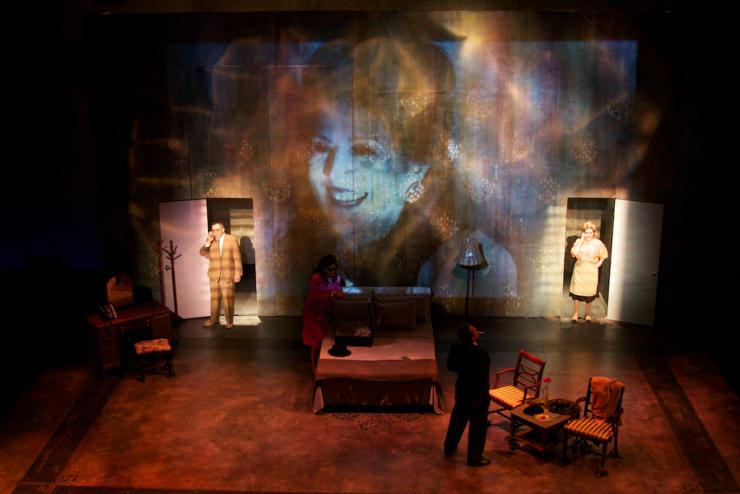
***
La Esquinita es un blog en serie que funciona como un cuaderno de producción digital para los diseñadores y artesanos del teatro latino en el país. Por medio de esta serie compartirán historias sobre el proceso y la producción de su trabajo, incluyendo anécdotas y experiencias detrás de sus dinámicas colaboraciones. Con el fin de vislumbrar el mundo detrás del telón, a través de esta serie encontrarás a estos maestros artesanos, técnicos y diseñadores relatando sus experiencias en la creación de los paisajes teatrales evocadores que vemos hoy en día. ¡Bienvenidos a nuestra esquina!
Tara Houston: Cómo han influido sus años formativos en su desarrollo como diseñador y artista?
Pablo Santiago: Me crecí en Teopisca, un pequeño pueblo aledaño a San Cristóbal de Las Casas, Chiapas. Cuando tenía quince años me mudé a San Diego, CA para vivir con mi mamá y mis hermanos. Yo creo que la riqueza que se obtiene al vivir en diferentes países, las vivencias en culturas diversas y el hablar tres lenguas (español, inglés e italiano) me han dado la capacidad de ver al mundo con un perspectiva más completa. La lección más importante que se me inculcó de joven fue la idea de la congruencia entre la perspectiva global y los detalles. Cada decisión, por más pequeña que sea, tiene que estar en linea con ideas e ideales comunes, los grandes temas y la colaboración. A menudo trabajo con directores y coreógrafos de culturas diversas en trabajos experimentales, en espacios y locaciones no tradicionales. Yo creo que la prioridad son las contribuciones y la colaboración de todos los creadores de la obra por encima de cualquier aspecto individual.
Viví en Chiapas durante los '80s la época precursora al movimiento de 1994. Me encontraba rodeado de personas que constantemente se imaginaban un futuro mejor y trabajaban para ello día a día. Mis papás dedicaron su vida a la defensa de los derechos humanos y económicos de los mexicanos indígenas, a la justicia social y al activismo. Desde niño se me enseño a considerar muchos puntos de vista, a entender que la colaboración es la única manera de encontrar soluciones, y a mantener una visión compuesta de los niveles macro y micro simultáneamente en cualquier situación. Se me inculcó la inclusión de opiniones y vidas alternativas y marginadas en cada decisión. Por ende, para mi la base de cada idea de diseño de iluminación tiene sus raíces en la conexión entre la visión global y su congruente reflexión en cada decisión por más mínima que sea.
Tara: Cómo han influído sus trabajos en el cine y comerciales en la manera que trabajas para espectáculos en vivo?
Pablo: Antes de que me dedicara a la iluminación para espectáculos en vivo, trabajé como tramoyista y cinematógrafo en Los Angeles a lo largo de quince años. En mi trabajo actual hay ecos de la iluminación para el cine, tales como la importancia y la belleza del acercamiento o close-up y la luz indirecta y suave. No siempre los incluyo en mis diseños pero son parte de mis consideraciones iniciales en cada diseño. Yo pienso que sobre todo el trabajar en el cine me ha enseñado a tener mas en cuenta sutiles cambios de luz y el papel que juegan las sombras en la abilidad para contar un historia.
Tara: Describa su proceso de diseño.
Pablo: Lo que me atrae más en el teatro es el arco emotional de la obra, la necesidad de crear un espacio que se transforme con una serie de imágenes evocativas que impulsan una experiencia, or una historia hacia adelante para transmitir un estado emotional o una perspectiva intelectual. Por esta razón me inclino por la iluminación Expresionista. Las primeras consideraciones para mi son los puntos de vista del director, el escritor, los actores y las mias, y como los vamos a transmitir al espectador. Iluminación para el teatro específicamente, en mi opinion, va en busca de un lenguaje y contenido poético. Al mismo tiempo, me gusta trabajar de arriba hacia abajo, empezando con los grandes temas y poco a poco acercarme a los detalles sin perder de vista el arco principal de la obra. Por supuesto que no podemos olvidarnos de los principales puntos de la trama pero el trabajo tiene que trascender mas allá de ellos. El significado es construido a través de una serie de imágenes, haikus visuales, con un ritmo específico (similar a la música), cuando una imagen hace contacto con la siguiente. Esto entonces se convierte en la llave para el espectador para navegar su propia experiencia emocional, intelectual o visceral con la obra.
Yo creo que el espectador viene al teatro para sentir placer, tensión, tristeza, amor, etc… como tal, el espectador está siempre consciente de la experiencia teatral y es un participe cómplice en la experiencia. El espectador es sofisticado e inteligente y al mismo tiempo se entrega y cuestiona a cada momento. En otras palabras, el espectador vive su involucramiento y su alienación simultáneamente hacia y desde la obra. Me imagino a la experiencia teatral como un reloj con mecanismos internos diseñados a funcionar como una entidad autónoma. Todas las piesas que crean el significado de la obra tienen que estar presentes en el escenario y se compaginan para narrar una historia, crear sistemas de jerarquía entre elementos de diseño y las decisiones del director.

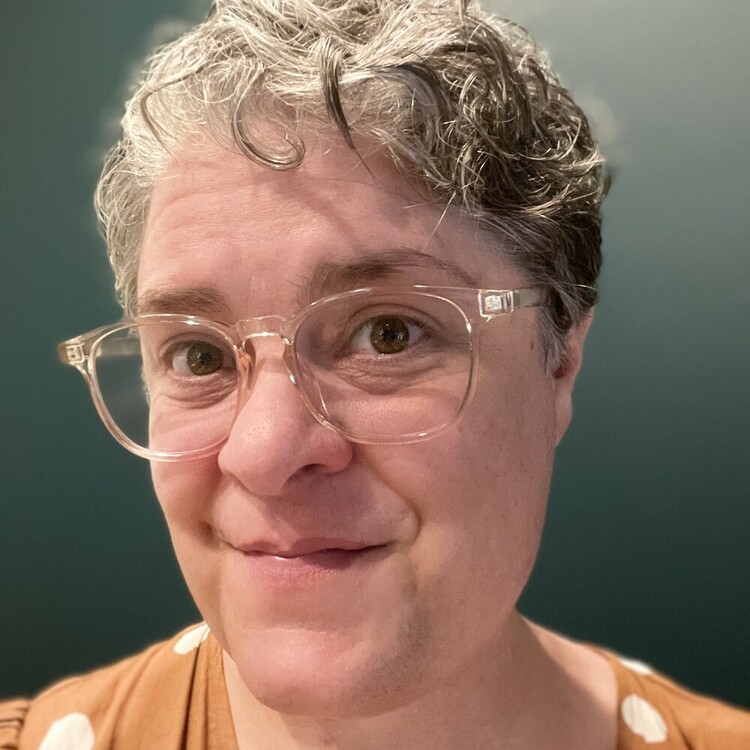



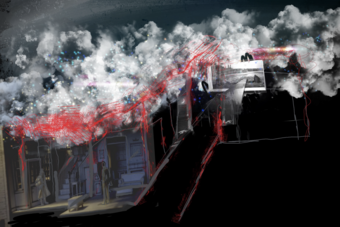


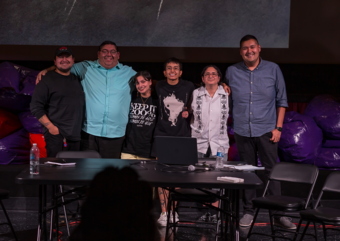

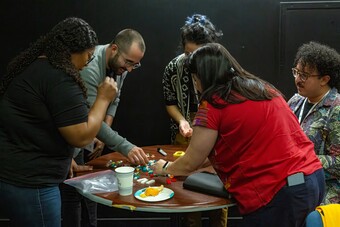

Comments
The article is just the start of the conversation—we want to know what you think about this subject, too! HowlRound is a space for knowledge-sharing, and we welcome spirited, thoughtful, and on-topic dialogue. Find our full comments policy here
This was a delight to read. Pablo, thank you for sharing your stories and work with us. Tara, thank you for creating space for us to be delighted!
Wonderful article about a great artist and collaborator. One small correction <<director: jed="" ariza,="">> it's spelled J.Ed Araiza.
Thank you for the spellcheck. The correction has been made!
¡Muchas gracias a Pablo, Tara y el equipo de Café Onda y HowlRound por
ofrecer contenido bilingüe!
Having seen Santiago's work, I really enjoyed learning about his processes and influences as a designer. Great work!
Thank you Tara for profiling Pablo, you did a wonderful job! Pablo, you have such beautiful photos of your lighting. I really enjoyed reading your approach to design.